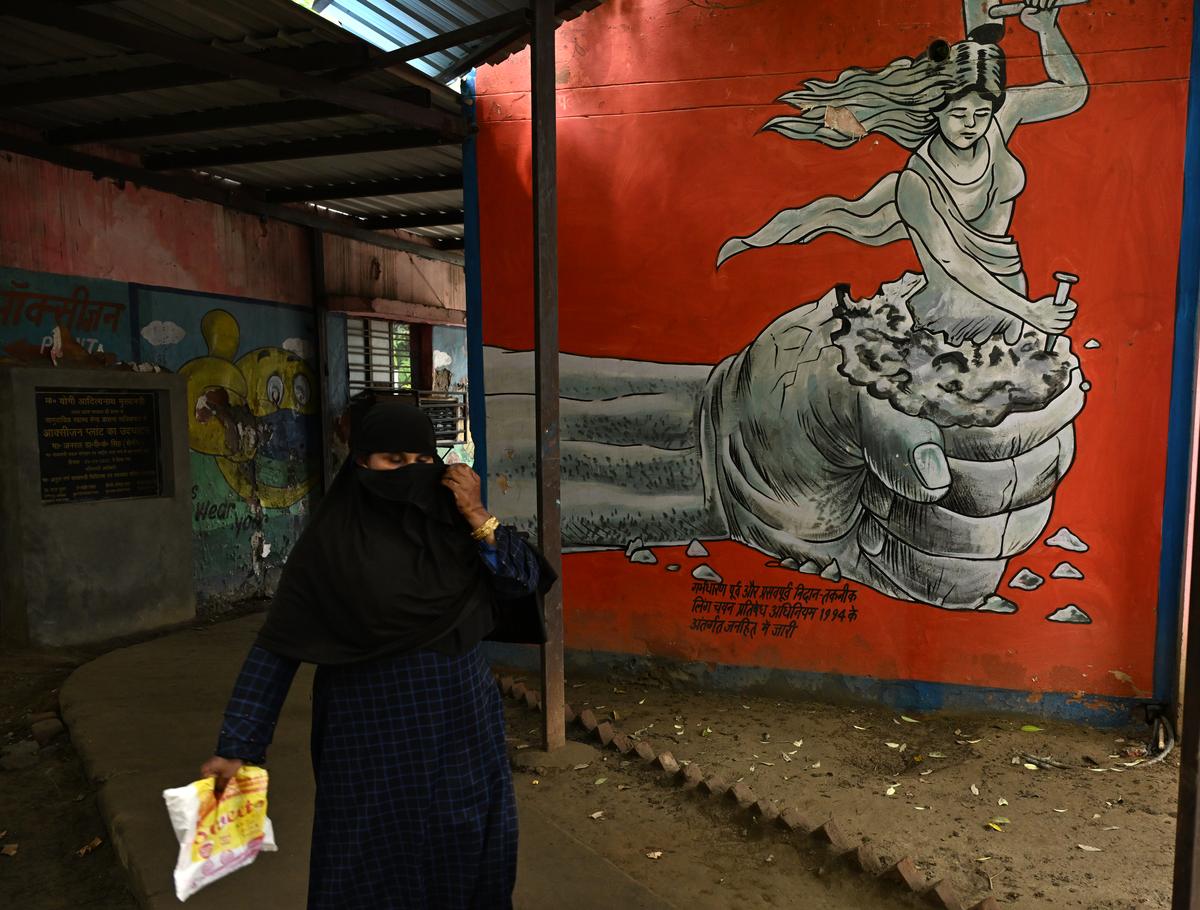Every day, Dr. Swati Sagar, a dental surgeon at a community health centre in Uttar Pradesh’s Dhaulana, makes sure she leaves work before the sun sets so she can reach her home, almost 40 km away in Noida, safe and sound.
In Dhaulana, located in Hapur district, closed shops and empty roads after 7 p.m. are a common sight. The centre itself is located on an isolated patch of land surrounded by green fields that stretch as far as the eye can see. Nobody ventures out of their homes come darkness.
“It’s an unsafe area. There’s no policeman in sight. Drunk men enter hospital premises often, even during the daytime. The guards don’t help, and there are no CCTV cameras either,” laments Dr. Sagar. She is the only female doctor at the centre.
She adds that she has been especially on edge since the Kolkata incident, wherein a second-year postgraduate trainee doctor was allegedly raped and murdered inside the state-run R.G. Kar Medical College and Hospital while she was resting in a seminar hall after a 36-hour shift.
But working in smaller towns sometimes presents an even bigger set of challenges, says Dr. Sagar.
Even at her centre, there is no space to catch a moment’s respite. “I cannot rest at all. I only have a chair that doesn’t recline. There are no attached washrooms either. Us female doctors understand why the Kolkata victim was forced to rest in a public area. Here, too, I am left with no choice but to sleep in patients’ beds, waiting rooms, or even empty halls,” she says.

Several doctors in smaller towns, including Dr. Sagar, continue to agitate for safe workplaces in their own ways — some show up to work wearing black ribbons, and others gather in communities to protest whenever they can.
No space is safe
About 25 km away from Dhaulana is Ghaziabad. For Dr. Neha Chaudhary, who works in the gynaecology department at the community health centre in Dasna, on the outskirts of the town, security is a never-ending worry even inside the hospital.
There have been several instances when male patients have misbehaved with her, she says, and the only thing that works is the threat of “police bula doongi (I will call the police)”.
Also read: Centre will ensure safety of medical staff, Union Health Minister tells Indian Medical Association
Men, she says, also have a habit of sitting inside hospital premises without any prescription or appointment due to the lack of security guards. They stare at female doctors unashamedly, she says, adding, “We know no male doctor will swoop in and help us.”
Dr. Chaudhary recalls an incident from last year which made her particularly uncomfortable. “A group of men just barged into my room one day. One of them pulled down his pants and demanded I treat his thigh. They only left after I threatened them with the police,” she says, adding that this has practically become “an everyday thing”.

The community health centre at Dasna in Ghaziabad district, Uttar Pradesh.
| Photo Credit:
MOORTHY RV
After reading about the Kolkata incident in the news, Dr. Noor says even taking a rickshaw to Maharaja Suheldev Autonomous State Medical College in Bahraich, where she works as an intern in the emergency and gynaecology wards, is a “scary” experience.
“Although my shift timings are 8 p.m. to 8 a.m., I reach much earlier because I don’t want to travel after nightfall. I’d rather wait awhile before my shift begins,” she says, adding that by the time she needs to get to work, shops in the area close, and only a few autorickshaw drivers roam the roads. There are no security guards at the hospital, where over 2,000 patients visit the outpatient department every day, and no CCTV cameras either, she says.
Nearly 100 km away from Bahraich in Bihar’s Purnia district, Dr. Sandhya Shree works in a remote location called Banmankhi at the sub-divisional hospital, where she sees 100 patients every day.

To ensure her safety, she has taken up a house less than two km away from the hospital to reduce travel, but that does nothing to guarantee a safe workplace, she says.
“We often get threatened and abused by men, because they always find it easier to scream at a woman doctor,” she says, adding that there is no point expecting security to be present at a state-run hospital, which barely has enough facilities to even function.
Some doctors have stopped practising in government hospitals altogether. Dr. Priyanka Pandey, now a private practitioner in Lucknow, recollects the chilling incident that made her leave.
“When I was 28 and working at a district hospital in Jhansi, a relative of a politician came and sat inside the women’s ward. When I asked him to leave, he threatened to throw acid at me,” she says.
Though she filed an FIR, nobody at the hospital supported her. “Instead, they told me to keep quiet. Every day was a struggle to save myself from another attack. I suppose I simply paid the price of being a woman,” Dr. Pandey shrugs.